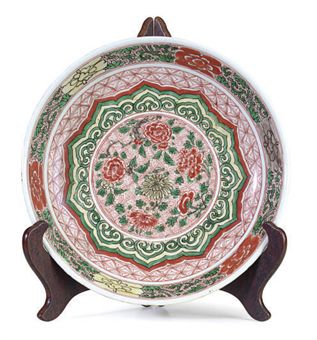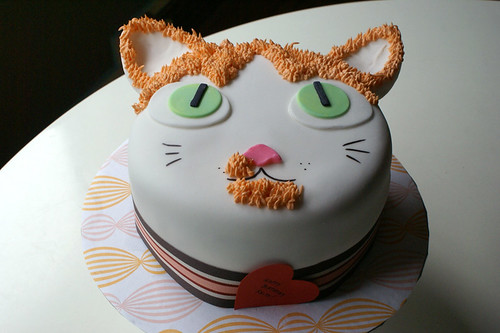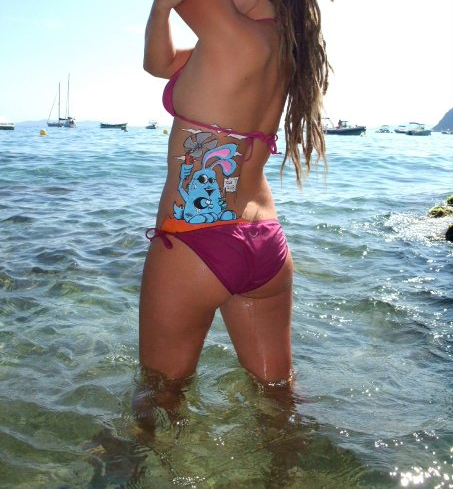|
|
|
|
|---|
Kamis, 28 Januari 2010
Art in China


...Lady Gaga's eyes in bad romance!...

Look at the eyes! Look like one of those anime characters!
Selasa, 26 Januari 2010
Shanghai, Day One

I arrived in Shanghai late at night and got settled into my hostel later still. By the time I was squared away, the subways were already closed and, having no desire to deal with taxi drivers, I just made a circuit up and down the neighborhood’s main drag. It was dark, cold, and everything was closed. A few bicyclists and cars rolled along while street food vendors stood sentry on corners. And that was about it. From first impressions, Shanghai didn’t seem like much.
Morning changed this. I was up and out early. People, cars and bicyclists were everywhere and, in daylight, the first thing that hits you is the construction. It would be only minor polishing of the truth to say that, in every direction you looked, something was going up. Here a building encased in scaffolding and green tarp, there a hole in the ground where foundations are starting to take shape, and over there some ugly old building being ripped down in anticipation of a new apartment block. The sheer quantity of work going on—the manpower and material that must be brought to bare—gave me the sensation of standing at the center of an explosion, feeling the release of energy pass through me.
The negative, of course, is dust, noise and the smell of ozone. Think of the annoyance of a single project in your neighborhood. Remind yourself of the need to plug your ears, cover your nose, avoid flying welding sparks, wait for some vehicle to slowly back up across your path; now treble that.
Seeing all this makes running through the numbers inescapable. In a city of 16 million, even if every apartment housed a thousand, that still implies 16,000 blocks of apartments. So, I suppose, there was a market for all the new apartments. As to the office complexes, I was less certain. Across the Huangpu River, a vast area, only a decade removed from lying fallow, had been designated for commercial development; now it bristled with skyscrapers. Yet, no matter how much manufacturing was being done in China, and no matter how much this necessitated mustering and quartering an army of financiers, asset managers and so forth, I couldn’t see it requiring as much office space as was on offer. It was only a hunch, but a few stops into various little malls revealed swathes of unrented space. I suspected that many of those new office buildings were rising-up on faith and lacking in confirmed residents.
My first day’s goal was to go to the central People’s Square and the fashionable Xintiandi district south of there. Doing this necessitated subway navigation which led first to confusion and then to redirection by a friendly man who saw me staring dumbly at the subway map—literally everyone I have interacted with thus far has been helpful and friendly, not a single store owner, restaurateur or vendor (with the exception of those in the most heavily touristed areas) has quoted me an unreasonable price. Once reoriented, I discovered the ticket machines only accepted coins and so set off on a quest to break a large note. This took me into a series of back streets in search of a corner store. Instead I came across a sprawling marketplace.
Whereas markets in Istanbul had been rather dull affairs where every vendor seemed to have fairly similar items, and not a wide variety at that rate, this one was pleasantly varied. There were street vendors selling meat skewers, streamed dough balls filled with meat, sesame covered fried rice balls, potstickers, and a thin, flaky fried bread layered with green onion that I remembered gorging on during my last time in China.
Vegetable-wise all the usual suspects were present as well as the sort of things I’d only seen before as specially featured and highly marked up in Asian specialty markets—here it was all run of the mill. And then there were varieties of vegetable that were utterly new to me—troughs filled with things resembling, if not actually, seaweed.
Fruits and meat were fairly standard—although, as with Turkey, there were far more meat specimens on display (unlike Turkey, many of these were pork.) Chief among these were pig and chicken feet, the latter of which I have eaten and would discourage anyone who didn’t grow up enjoying them from bothering to sample.
Finally, there were the live animals; cages upon cages of live chickens and ducks, tanks full of snails, clams, eels and fish. I watched as fish were selected, snatched up flapping wildly, and unceremoniously chopped up then and there. A little ways towards the edges, where the vendors thinned out, one lady was selling giant frogs out of a burlap bag.
Now, maybe I’m just romanticizing the whole thing—perhaps its just some middle-class faux-anti-modernism that makes me love this sort of thing—but I fell such pleasure passing through markets of this nature where the blood and guts are right there to see and nothing feels hidden.
Once finished snacking and breaking bills at the market, I caught the subway down to the Xintiandi district. Emerging I was, naturally, confronted by a towering, half-constructed building encased in green tarp. Once I had turned to the left, however, I was met with a less expected sight. A long street of newly constructed, one and two story buildings all with beautiful redbrick facades. Each store housed either name-brand clothing or the sort of upper middle class boutique one might find scattered through any rich city’s more upscale neighborhoods. None of these stores had Chinese prominent and every street sign on this and surrounding streets was bilingual. I had expected Shanghai to be a fancier affair than any part of China I might have seen five years earlier, but I had not expected to be plopped down into Park Slope, Brooklyn.
I walked widely around the neighborhood, feeling extra out of place surrounded by well dressed Chinese in a pair of jeans and a worn-out Carhart jacket. The area contained such sights as the Shanghai Music conservatory—the only place I’ve ever been where good classical music cds can be bought out of street vendors’ cardboard boxes—and a wonderful park where I watched children and old men flying kites. The sky above—the whole sky, the entire time I was in the city—was a murky grey which I first took to be intense pollution, but gradually realized to be a perpetual haze of fog. The fog was so thick that, walking down a wide city street, I could not see more than four blocks on several occasions. I can only imagine the city in summer to be a nightmare of humidity.
On my way through the neighborhood, I came across a sight, utterly banal, but shocking in so far as it juxtaposed itself with the day’s earlier visions: A larger, chain-style supermarket across from which were, set up in the same red-brick-façade-style buildings, a series of food vendors hawking the same snacks I’d seen earlier. Yet, instead of operating out of carts and crumbling little holes-in-the-wall, they were ensconced in this fancy permanence. Here I could see an anthropologist’s wet dream—“the cooption of traditional market practices into new economic matrices” or some-such. Point of fact, though, it was a surprise to see what I had earlier gloried in experiencing, here reproduced in a manner more reflective of a mall food court.
I hiked north from Xintiandi to the People’s Square—not a square so much as a vast park peppered with museums, concert halls, rides, cafes, little lakes, benches for game playing, and paths for strolling. Over my time in the city I witnessed all those typical activities as well as a lone teenager practicing judo on a helpless tree and a crowd of several dozen older people, signs hung all about them, trying to find marriage partners for their unmarried children—this latter affair being, apparently, a weekly event.
The north side of the park is bounded by Nanjing Road. This is the main pedestrian street of the city and it should be ranked among the wonders of the urban world. It hits you in an explosion of neon light. Throngs upon throngs move up and down it, in and out of thousands of shops. Stores burst with customers. Snaking off it are shadowy backstreets lined with restaurants, spilling over with customers. In front of these are vendors selling food off carts.
Back on Nanjing Road the crowds continue to surge up to the park and its surrounding attractions and down toward the Bund, the embankment along the Huangpu River upon which all the old European-style commercial buildings are set. Normally pedestrians can walk along it, taking in views of the gloriously colorful skyscrapers across the way (among which is a space-ship-looking beast of a building which puts the Space Needle to shame.) At the moment, however, the entire embankment was under construction. As a result the sea of people making their way down Nanjing Road bottlenecked on the final street corner and took their pictures from there. And I, not having brought my camera along, simply stood looking out across the water thinking how ephemeral my once secure American world now felt. In all the smiling faces I saw up and down that road I felt as though I were seeing the future. I wasn’t sure I saw myself reflected.
Introduction

Somewhere, buried deep within a behemoth copy of Mote’s Imperial China, 900-1800, I remember coming across the most romantic of ideas. The historian was describing the activities of some barbarian king out on the periphery of the Chinese empire. While the Chinese themselves were busy knuckling down into one of their declinatory phases, this particular king was vigorously building his own little empire. He was importing scholars, offering pay at good rates, as well as constructing a city for his once nomadic people. He was out there in the wilderness, striving, creating a new world out of thin air. I forget his name, I forget the year, all I remember is the beauty of the idea. How must it have felt for that king to have watched a new world rise up around him?
I wonder if a Chinese—at least one living in a major city—feels something approaching those same feelings. To be living in the country at the moment is to see a new world springing up at every turn.
Senin, 18 Januari 2010
Cat Cakes
Separated at birth! Or separated by a computer printer!
 This little black and white kitty cracks me up so hard... Great cake and great cat...
This little black and white kitty cracks me up so hard... Great cake and great cat... This is soooo grody too yet fascinating: THE CAT LITTER CAKE. Made from cake, tootsie rolls, crunched up crackery things... ugh so sick. Here is a link to the recipe and how-to. In case you want to gross yourself out super hard by eating "cake" out of a litter box.
This is soooo grody too yet fascinating: THE CAT LITTER CAKE. Made from cake, tootsie rolls, crunched up crackery things... ugh so sick. Here is a link to the recipe and how-to. In case you want to gross yourself out super hard by eating "cake" out of a litter box.


















